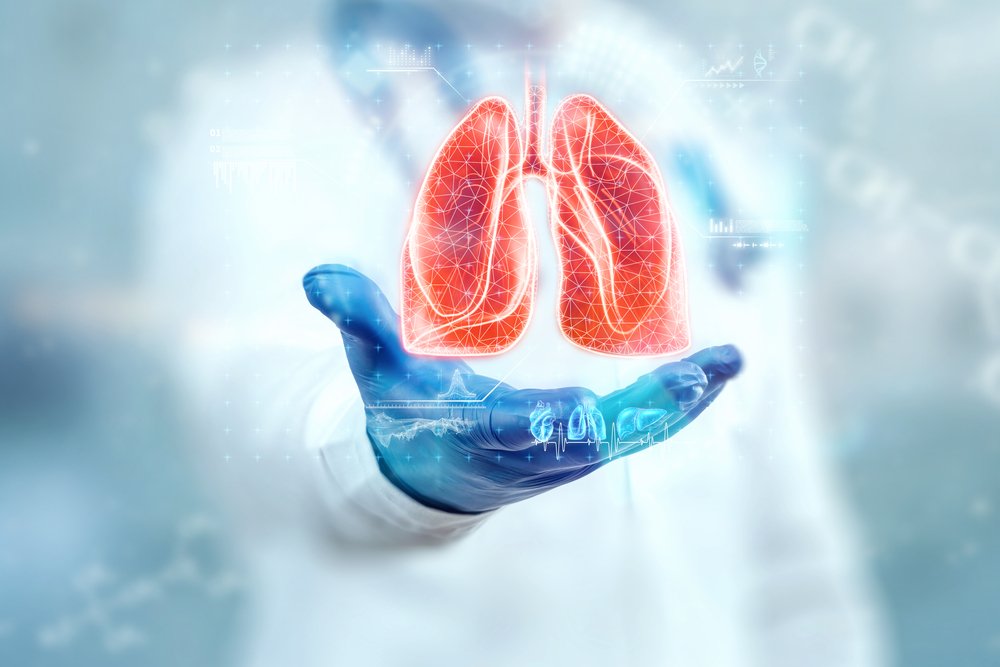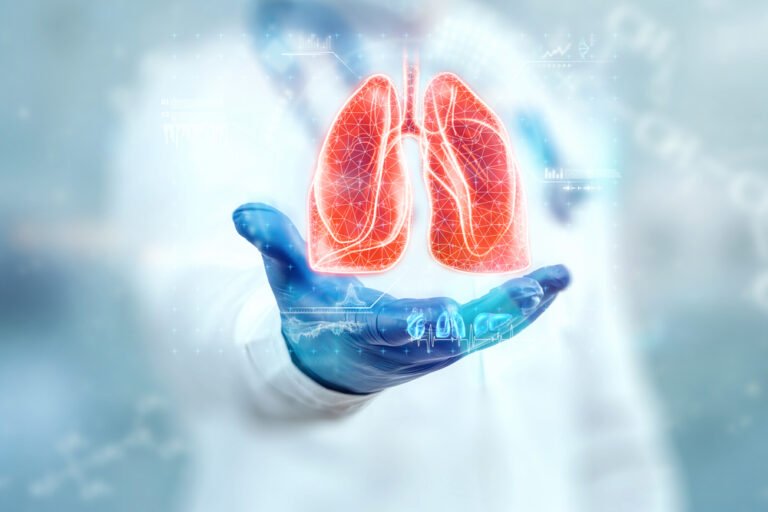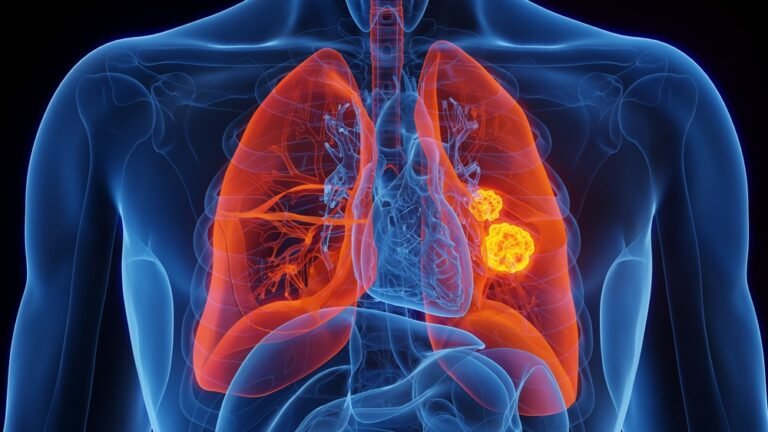Pneumonia is a condition caused by microbial infection within the lung. There are small sacs of air in lung called alveoli, in pneumonia these alveoli are filled with pus or fluid.
What is pneumonia?
What is pneumonia? Pneumonia is a condition caused by microbial infection within the lung. There are small sacs of air in lung called alveoli, in pneumonia these alveoli are filled with pus or fluid. This leads to symptoms of pneumonia. The gold standard for recognition of pneumonia is the presence of new lung shadowing on a chest radiograph with both respiratory and general symptoms.
Pneumonia Symptoms
Pneumonia systems are categorized as respiratory and general symptoms.
Respiratory symptoms
- Cough
- Breathlessness
- Sputum
- Chest pain
General symptoms
- Fever
- Shivering
- Lethargy
- Body aches
- Headache
- Joint pain
- Diarrhea
- Mental confusion
Signs
- Fast heart rate
- Raised breathing rate
Types of pneumonia on basis of area affected
Lobar pneumonia
Lobar pneumonia involves entire lobe of lung.
Multifocal pneumonia
Multifocal pneumonia is a lung infection that appears in more than one area of one or both lungs. It has patchy distribution in lung.
Viruses, bacteria, or fungi can cause it, but most often it is caused by viruses like COVID-19 virus, RSV. Weak immunity makes a person more prone to suffer from multifocal pneumonia, so old age people and young children are more susceptible.
Organisms causing multifocal pneumonia
Bacteria
- Streptococcus pneumoniae
- Legionella pneumophila
- Mycoplasma pneumoniae
- Klebsiella pneumoniae
- Pseudomonas aeruginosa
- Hemophilus influenzae
- Staphylococcus aureus
Virus
- Corona virus 2
- Respiratory syncytial virus
- Human Rhinovirus
- Influenza virus A and B
Fungus
- Pneumocystis jirovecii
- Aspergillus fumigatus
- Cryptococcus neoformans
- Candida
- Histoplasma capsulatum
Streptococcal pneumoniae infection: is quite common in alcoholics, diabetics, cigarette smokers.
Legionella infection: may occur after exposure to aerosols of contaminated water (cooling towers, showers, grocery store mist machines, whirlpool spas, water distribution system). Young smokers are more susceptible.
Hemophilus influenzae: infection more common in those with COPD and Cystic Fibrosis.
Staphylococcal infection: is especially common following influenza virus infection and in intravenous drug abusers.
Klebsiella infection: in alcoholics.
Pseudomonas infection: in smokers.
Influenza: occurs in seasonal outbreaks during the winter months and pandemics.
Pneumocystis jirovecii, Cryptococcus, Histoplasma, Aspergillus infections commonly seen in HIV patients.
Pneumonia Severity scores
CURB65 is a scoring system that is used for severity classification of pneumonia. It is recommended by the British Thoracic Society (BTS) and by the National Institute for Health and Care Excellence (NICE). CURB65 is validated to predict 30-day mortality and may be used to assess which patients require hospital admission.
CURB-65 score – assign one point for each
- Confusion/ disorientation in person, place or time
- Serum urea level >7 mmol/L
- Breathing rate ≥30/min
- Blood pressure Systolic BP <90 and/or diastolic BP ≤60 mmHg
- Age ≥65 years.
High severity: (CURB65 score of 3–5) is associated with a mortality of 15–40%. These patients require early consultant review and consideration of ICU or high dependency unit (HDU) care.
Moderate severity: (CURB65 score of 2) is associated with a mortality of 9%. Consider short inpatient admission or hospital supervised outpatient treatment.
Low severity: (CURB65 score of 0–1) is associated with a mortality of <3%. Patients with low severity CAP may be suitable for home treatment, depending upon their social circumstances, wishes, and comorbid conditions.
CRB65 can also be used if serum urea level report is pending or not available.
Score 0 suggests patients with a low risk of death who may be appropriately treated at home.
Score ≥1 should be considered for hospital admission.
Poor prognostic factors:
Patients with two or more poor predictors are at high risk of death and should be managed as for severe pneumonia:
- Age ≥65 y
- Coexisting disease including cardiac disease, diabetes, COPD, stroke
- Breathing rate ≥30/min—one of the most reliable predictors of disease severity
- Mental confusion
- Blood pressure systolic ≤90/diastolic ≤60 mmHg
- Low blood oxygen level, with PaO2 <8 kPa and need for mechanical ventilator
- Blood Urea level ≥7 mmol/L
- Serum albumin <35 g/L
- White blood cells >20 or <4 ×109/L
- Progression of Chest Xray changes
- Positive blood culture
Pneumonia Treatment & Management
Antibiotic
IV antibiotics should be administered immediately to patients with high severity pneumonia caused by bacteria. IV antibiotics will also be required in patients with non-severe pneumonia who are unable to safely take oral medications (unable to swallow or impaired conscious level)
Oral antibiotics should be used in those low severity pneumonia.
Anti-viral and anti-fungal agents in case of viral or fungal infection respectively are given instead of antibiotics.
Duration of antibiotic treatment
- Low severity, uncomplicated = 5 days
- Moderate and high severity = 7–10 days
Oxygen
Optimal target oxygen saturation for most patients is 94–98%.
Fluids
Encourage oral fluids. Intravenous (IV) fluids may be needed if dehydrated and severely unwell. Monitor urine output.
Analgesia
Paracetamol or non-steroidal anti-inflammatories (NSAIDs), if required for pain and fever.
Nutrition Supplements:
may be of benefit in prolonged illness.
Early mobilization:
Should be encouraged.
7. Physiotherapy
Airway clearance techniques may be considered in patients having difficulty expectorating sputum.
Monitoring
- Temperature
- Breathing rate
- Heart rate
- Blood pressure
- Mental status/ orientation
- Oxygen saturation
- Patients with high severity require medical review at least 12-hourly
- Consider repeat CRP and repeat Chest Xray in patients who are not improving after 3 days of treatment.
ICU admission/referral criteria
Those fulfilling criteria for severe pneumonia on admission or who fail to respond rapidly to treatment should be considered for transfer to either HDU or ICU.
- Persisting low oxygen level despite giving oxygen support.
- Acidosis i.e. low pH on Arterial Blood Gases
- Hypercapnia i.e. high carbon dioxide level in blood
- Low blood pressure despite adequate fluids
- Impaired conscious level, despite treatment.
These are all indications for putting patient on mechanical ventilator and hence shifting to ICU.
Diagnosis
Investigations are aimed at confirming the diagnosis, assessing disease severity, guiding appropriate treatment, assessing the presence of underlying disease, enabling identification of complications, and monitoring progress.
- Arterial Blood Gases (ABGs) to assess oxygen and carbon dioxide levels in blood.
- Chest Xray should be performed promptly with the aim of confirming the diagnosis in time for antibiotics to be administered within 4 hours of hospital presentation.
- Computed tomography (CT chest)
It may be useful if the diagnosis is in doubt or the patient is severely ill and failing to respond to treatment in order to exclude complications.
- Serum urea level
It is a marker of more severe pneumonia
- Full blood count (FBC)
White cell count of >20 or <4 indicate severe infection.
- Liver function test and Renal function test (LFTs ,RFTs)
Deranged renal and liver function tests can be indicative of severe
infection or point to the presence of underlying disease.
- C-reactive protein (CRP)
It is a useful aid to management, with high levels being a more sensitive marker of infection than the white cell counts or temperature. Serial measures are very useful in assessing response to treatment.
Recovery
Following is the criteria that show recovery from pneumonia:
- Heart rate ≤100 beats per min
- Respiratory rate ≤24 breaths per min
- Systolic blood pressure ≥90 mmHg
- Body temperature ≤37.8°C
- Ability to take food by mouth
- Normal state of consciousness
- Oxygen saturation ≥90%
Criteria for discharge
Patients should have medical review within 24 h of planned discharge.
Postpone discharge if more than one of the following present:
- Temperature >37.8°C
- Heart Rate >100/min
- Breathing Rate >24/min
- Systolic BP <90 mmHg
- Oxygen saturation <90%,
- Inability to maintain oral intake
- Abnormal mental status.
Encourage smoking cessation should be encouraged in current smokers with pneumonia to prevent further episodes of pneumonia requiring hospital admission.
Follow up
Patients should be reviewed by chest physician 6 weeks after an episode of pneumonia. Radiographic improvement lags behind clinical improvement. There is no need to repeat a CXR before hospital discharge in patients who have made a satisfactory clinical recovery. Although repeat Chest Xray is recommended 6 weeks later:
- In all patients with persisting symptoms or signs.
- In all patients considered to be at higher risk of underlying lung cancer, especially smokers and those over the age of 50 years.
Vaccination
- Influenza vaccine. It reduces hospital deaths from pneumonia and influenza by about 65%. Contraindicated in people with hen egg hypersensitivity (the virus is cultured in chick embryos).
- Pneumococcal vaccine
- COVID-19 vaccine









